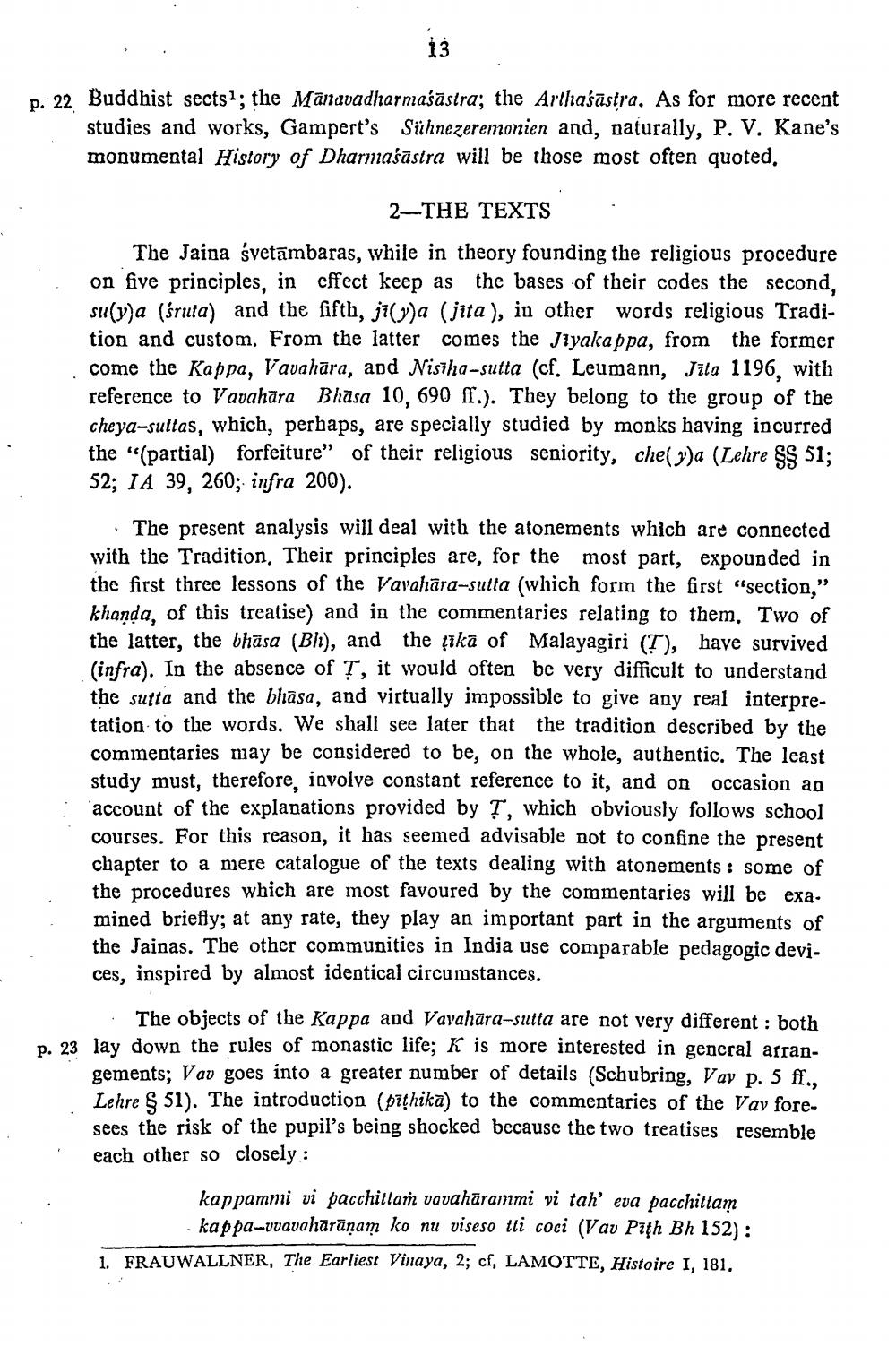________________
13
p. 22 Buddhist sects?; the Mänavadharmaśāstra; the Arthaśāstra. As for more recent
studies and works, Gampert's Sühnezeremonien and, naturally, P. V. Kane's monumental History of Dharmaśāsira will be those most often quoted,
2—THE TEXTS The Jaina svetāmbaras, while in theory founding the religious procedure on five principles, in effect keep as the bases of their codes the second, su(y)a (śruta) and the fifth, ji(y)a (juta), in other words religious Tradition and custom. From the latter comes the Jiyakappa, from the former come the Kappa, Vavahāra, and Nisiha-sutta (cf. Leumann, Jita 1196, with reference to Vavahāra Bhāsa 10, 690 ff.). They belong to the group of the cheya-sultas, which, perhaps, are specially studied by monks having incurred the "(partial) forfeiture" of their religious seniority, che( y)a (Lehre SS 51; 52; IA 39, 260; infra 200).
The present analysis will deal with the atonements which are connected with the Tradition. Their principles are, for the most part, expounded in the first three lessons of the Vavahāra-sulta (which form the first section," khanda, of this treatise) and in the commentaries relating to them. Two of the latter, the bhäsa (Bh), and the ţikā of Malayagiri (T), have survived (infra). In the absence of ?, it would often be very difficult to understand the sutta and the bhāsa, and virtually impossible to give any real interpretation to the words. We shall see later that the tradition described by the commentaries may be considered to be, on the whole, authentic. The least study must, therefore, involve constant reference to it, and on occasion an account of the explanations provided by ?, which obviously follows school courses. For this reason, it has seemed advisable not to confine the present chapter to a mere catalogue of the texts dealing with atonements : some of the procedures which are most favoured by the commentaries will be exa. mined briefly; at any rate, they play an important part in the arguments of the Jainas. The other communities in India use comparable pedagogic devi. ces, inspired by almost identical circumstances.
The objects of the Kappa and Varaltāra-sutta are not very different : both D. 23 lay down the rules of monastic life; K is more interested in general arran
gements; Vav goes into a greater number of details (Schubring, Vay p. 5 ff.. Lehre S 51). The introduction (pathika) to the commentaries of the Vav foresees the risk of the pupil's being shocked because the two treatises resemble each other so closely :
kappammi vi pacchitlam vavahārammi vi tah' eva pacchittam
kappa-vvavahārānam ko nu viseso tli coci (Vav Pith Bh 152) : 1. FRAUWALLNER, The Earliest Vinaya, 2; cf, LAMOTTE, Histoire I, 181,




